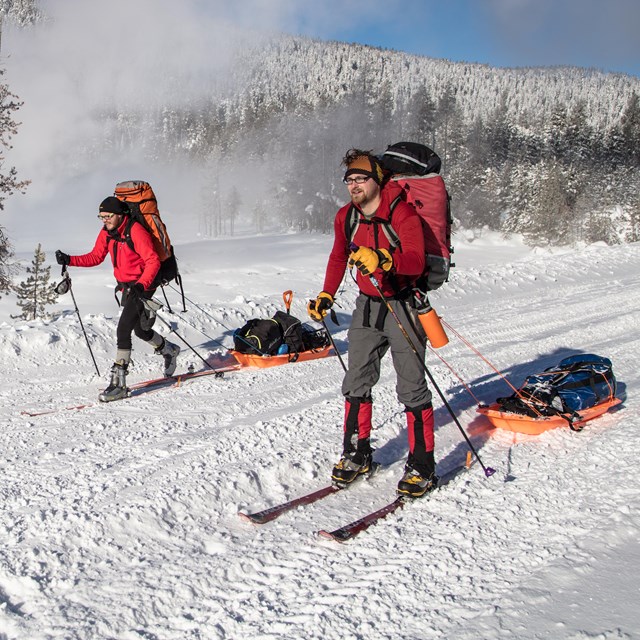Although only a few trails are groomed, all unplowed roads and trails in Yellowstone are open to cross-country skiing and snowshoeing. Whether you’re skiing a groomed trail in a developed area or exploring the backcountry, remember that you're traveling in wilderness with all its associated hazards: unpredictable wildlife, rapidly changing weather, hydrothermal areas, deep snow, open streams, and avalanche terrain. Your safety is not guaranteed—be prepared for any situation and know your physical limits.
From the North Entrance in Gardiner, Montana, you can access the Mammoth, Tower, and Northeast ski trails. In West Yellowstone, Montana, a variety of trails are available for skiing. For access to trails in the Canyon or Old Faithful areas, you’ll need to book a guided snowmobile or snowcoach tour, or apply for a permit through our Non-Commercially Guided Snowmobile Access Program. Stop by a visitor center to check current trail conditions.
Trail Etiquette
- Avoid walking or snowshoeing directly on ski tracks.
- Yield to skiers coming downhill.
- After a fall, fill in any depressions to help prevent hazards for others.
- If the trail becomes too difficult, turn back. Do not remove your skis to walk up or down hills—this leaves deep holes that are dangerous to others. Instead, turn sideways, dig in your ski edges, and sidestep up or down the slope.
- When skiing on roads, yield to vehicles. Ski in single file, facing traffic, to avoid accidents.










